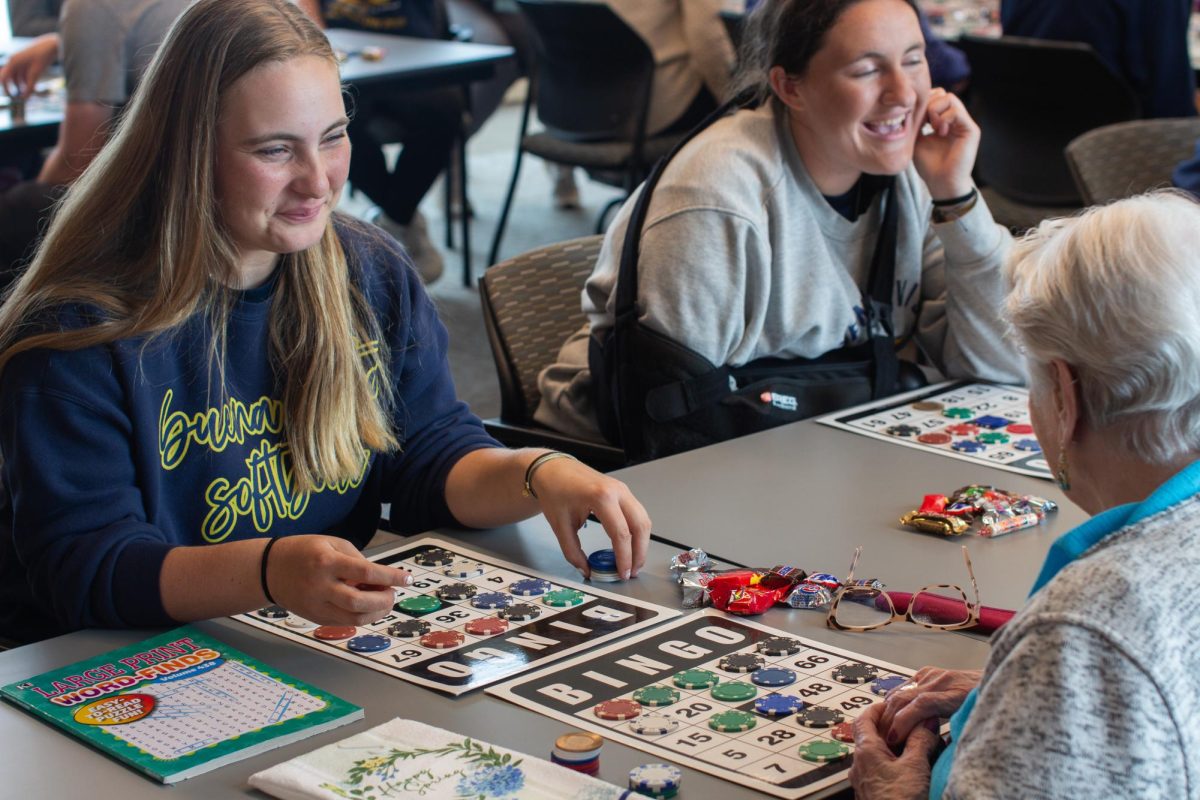Aaron Burns & Courtney Van Haaften | Co-Editors in Chief
Buena Vista University (BVU) has recently begun a process of prioritization. All current programs receiving funding from the university are currently being thoroughly reviewed. This includes 143 academic and 112 co-curricular and administrative programs. The process, which began last year, will last the rest of this academic year, and all BVU faculty and staff are involved in some way. A third party professional budget consultant, Bob Dickeson with Academic Strategy Partners, was hired to aid the process.
“In general, [prioritization is] a process of looking at everything we do and making sure that all of our resources – money, human resources, etc. – are all allocated in the right way to support students,” Director of Marketing and Communications Jennifer Felton said.
According to BVU President Fred Moore, one reason that the university decided to engage in prioritization is because of the national changes in higher education. Across the globe, higher education is confronting a series of changes in which financial models and practices are shifting. Simultaneously, BVU is situated in a unique and tough competitive higher education market because there are so many high quality private and state institutions in Iowa.
“One of our hallmarks has been that we’re financially strong,” Moore said. “We keep our debt low, we don’t run deficits, and…in this climate, which is more uncertain, it’s really important that we scrutinize very carefully how we’re using resources so that we stay financially strong. The only way to continue to offer good programs is to stay financially strong.”
According to Moore, another reason BVU is engaging in prioritization is because the institution believes taking a close look at everything and how it’s working is just good practice and could make BVU stronger in the years to come.
The Process
In order to investigate each academic, administrative, and co-curricular program, faculty and staff filled out mandatory Program Information Forms (PIFs). There were two different PIFs designed – one for academic programs and one for co-curricular and administrative programs. The PIFs are composed of several weighted criteria for each faculty or staff member to use to evaluate their own programs.
“Some of [the criteria] asks you to analyze data that’s provided for you. Some of them ask you to reflect on history, some of them ask you for visionary ideas of where you want your program to go and grow, who you could collaborate with, and what resources you need that you don’t feel like you have,” Felton said.
Faculty members authored PIFs for academic programs. Staff and administrators authored them for co-curricular and administrative programs on campus, though they had a slightly different set of questions.
Associate Professor of Theatre and steering committee member Bethany Larson wrote PIFs for the theatre major and minor. She described the writing process as an outlook on what a program has accomplished and where it could be going in the future.
“It was challenging because I’m not used to doing it. It’s not something that is in my regular routine. Each year we do a self-evaluation of ourselves and our work, but we don’t do that about our whole program,” Larson said.
Currently, BVU is in the information gathering process. All of the PIFs have been submitted and are in the process of being reviewed and approved. In the next step, starting Oct. 31 and running through mid-February 2015, designated review teams composed of faculty and staff members, which were put together through a nomination process, will read each PIF and score it based on a common rubric.
This will mean a lot of reading for those teams (143 PIFs for the academic team and 112 for the co-curricular team). Moore says keeping the process in-house was an important consideration. While the institution is using Dickeson’s firm in a consultative capacity, Moore says the decisions are being made by the BVU community.
“We did a lot of due diligence as to whether we wanted to try to do this ourselves or we wanted the help of an outside firm. We’ve made the decisions, they haven’t,” Moore said. “In terms of the construction of the criteria, the weights, the questions, the rubrics, all of that stuff, we did vast majority of author training ourselves, as it should be. It’s been good to have their experience and their expertise along the way to help guide us in some respects even though we were making the final decisions.”
Once all of the PIFs are scored, they will be placed into five categories, or quintiles, through a software program. Each quintile will rank programs from the highest to the lowest scores with equal numbers in each quintile. In February, once all of the programs are placed into quintiles, they will then move onto President Moore. PIFs and quintile rankings will be available through BeaverNet exclusively for faculty and staff to see. No student access will be granted.
Next, Moore will analyze quintile reports in consultation with Faculty Senate and GPS Council during March 2015. On April 6, 2015, the president will make his final recommendations to the Board of Trustees.
The final step, which is scheduled for May 8, 2015, will be when the Board of Trustees will take conclusive action on the president’s recommendations and direct the president to implement the decisions. The announcement of these final actions will also take place in May, on a date yet to be determined.
“The BVU Governance is a really important part of this because they have their own system for approving and denying things. It all has to be vetted with them for their input, and of course President Moore would want that,” Felton said.
Why prioritize?
There are many goals that the university has for prioritization, an important one has to do with the institution’s financial resources. According to Felton, as of now, BVU is looking to reallocate $3 million through this process.
“It’s not easy to come by new money these days in higher education, so you do have to look at reallocation along with a mix of some new money as well. But I think at the end of the day we’re going to be stronger for it,” Moore said.
Although there is the chance that some programs may lose funding and some programs may no longer be offered, current students do not need to worry that they won’t be able to finish their specified programs in their time at BVU.
“We’re not going to place current students in a situation of having to worry about whether they can finish that program here at the university. We will teach it out. We’re going to make what will be their alma mater stronger and more secure for the future,” President Moore said.
Moore feels this strength will come from reviewing current programs and thinking about new ones.
“We certainly are looking for ways to strengthen the quality of our existing offerings, thinking about new offerings that we can do of a high quality nature that are in demand, ways to make ourselves to improve our level of service to students, and ways that we can make ourselves more efficient and collaborate with one another better,” he said.
Although the administration hopes for a positive end goal, according to Felton, the process has not been without stress for the faculty and staff involved. Because of the high stakes of prioritization, a steering committee has been formed in order to guide and provide support to the faculty and staff who have been working hard in order to have the best outcome for their programs.
According to Larson, the timeline for the implementation of the decisions concerning reallocation is set to happen between a three to five year span. Students that have any questions or concerns about the process, or just want to learn more, are invited to attend the Student Senate meeting on Thursday, Oct. 30 where President Moore will be accepting questions from the student body. Open forum discussions with Moore will also be taking place in November on dates yet to be determined.
“We really incentivized people to think very hard about creative new ways in which we might do things, either in existing programs or new program offerings. What we hope will come out of this is a greater institutional knowledge of what we’re doing and how we’re doing it. I think that will lead to even greater collaboration across departments and schools,” Moore said.
Photo courtesy of University Marketing & Communications









